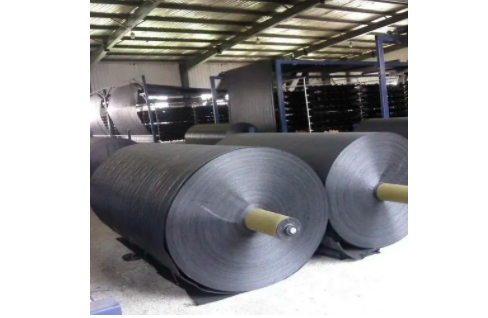- Understanding the Role of Geomembrane Liners in Waste Management
- Innovations in Geomembrane Liners for Water Management
- Geomembrane Liners: A Comprehensive Guide
- The Future of Geomembrane Liners in Civil Engineering
- Geomembrane Liners: Enhancing Landfill Stability
Manager:
WhatsApp:+86 177 0135 2670
Tel:+86 177 0135 2670
Email:marketing@okorder.com
Address:3rd Floor, No.2 Building, No.1 Sanlihe Road
Navigating Geotextile Pricing: An Odyssey in ‘Harga Geotextile’
In the intricate world of construction every detail counts, this is where Geotextiles come into being as mute guardians of our infrastructure’s integrity. In dealing with geotextiles pricing I find myself on a personal journey, exploring the delicate balance between cost, quality and performance. This article goes beyond being a guide; it is an ode to ‘harga geotextile’ and its place as a major influencer in shaping our built environment.

The Subtle Guardians: Geotextiles and Their Role
Geotextiles are fabrics made from synthetic fibres such as polyester or polypropylene that have become increasingly popular in construction projects. They are used for soil reinforcement, erosion control, and enhancing the stability of a variety of structures. As I began to appreciate their significance, I realized that the ‘harga geotextile,’ meaning the price of geotextiles remains a crucial factor that can make or break any project.
The Cost of Reinforcement: My Perspective
When I first came across geotextiles they struck me as being very versatile. Nonetheless it did not take long before I realized that the ‘harga geotextile’ could differ significantly based on type, quality and specific application requirements. It was this personal insight that inspired me to dig deeper into what influences geotextile pricing decisions and how those factors might impact planning or execution phases of my project.
Silent Oath: The Importance of Quality
Through further investigation I found out that quality determines how much someone pays for their geotextiles. While high-quality ones may come at a higher ‘harga geotextile,’ they perform better last longer than inferior products. That realization turned out to be my silent pledge — never compromise on quality even if there are tight budgets involved.
Pricing Paradigms: Per Meter, Per Roll, and Per Square Meter
Different approaches can be taken when pricing geotextiles, each with its own implications for project budgeting and material management.
Per Meter Pricing: The Thread of Budgeting
The ‘harga geotextile’ per meter is a thread which runs through the fabric of project budgeting. It is a measure that helps in determining the total cost of geotextiles needed for a particular job. As I considered this pricing model, I acknowledged that it was important to ensure that every project had a properly allocated budget.
Per Roll Pricing: The Spools of Efficiency
Understanding the ‘harga geotextile’ per roll is like mastering the art of spool management. It means knowing how much each spool of geotextile costs and how many are needed for a project. Knowing this helps me not to waste materials but to optimize their usage.
Per Square Meter Pricing: The Canvas of Long-Term Value
Like painting on canvas, where every stroke represents an investment in the long term value of the project; ‘harga getoxtelize’ per square meter seems almost like this. This calculation reflects on cost per unit area therefore showing the contribution made by such materials towards sustainability and effectiveness of projects.
Impact Of Geotextile Prices On Project Types
Different construction projects incur different costs for their geotextiles with each having its own requirements and challenges.
Roads and Infrastructure: The Backbone Of Stability
In road construction, identifying “harga” (price) is not limited to choosing just materials; it’s about selecting partners who could guarantee stability and longevity for roads being built. Higher prices could represent advanced technologies capable enough to stand time and traffic tests.
Landfill Projects: The Guardians of Waste Management
J. “harga geotextile” is an index for the quality of our commitment to waste management efficiency in landfills. A right geotextile can enhance the containment and safety levels of landfills, which means that investing on good quality ones will be a long term benefit with environmental protection.
Irrigation Systems: The Lifelines of Agriculture
T. For irrigation, “harga geotextile” means that it ensures effective and sustainable delivery of water. An appropriate geotextile improves system performance by aiding its overall success as well as the agricultural productivity it sustains.
Embankments: The Shields Against Natural Forces
G. In embankments, “harga geotextile” acts as the defense line against erosion and other natural forces. We use these costs to indicate our commitment to safety and reliability in these vital structures.
Conclusion: The Poetic Justice of Geotextile Pricing
F. Finally, ‘harga geotextile’ is not just a price tag; it is also a narrative of value, quality and foresight. It’s that poetic justice that rewards people who invest right materials into their projects thereby making it last forever in time. Looking back on my journey through geotextile pricing, I am reminded about how important it is to make informed decisions that balance cost with striving for excellence.” To me this is what the word “harga geotextile” means, a mantra we take upon ourselves when we choose materials that will shape our world – brick after brick thread after thread; or in this case; one piece of geotextile unto another – literally ball by ball
- Previous:A Pioneer in Environmental Stewardship: The Enduring Legacy of Northwest Linings and Geotextile
- Next:Nonwoven Geotextiles: The Invisible Heroes of the Earth






